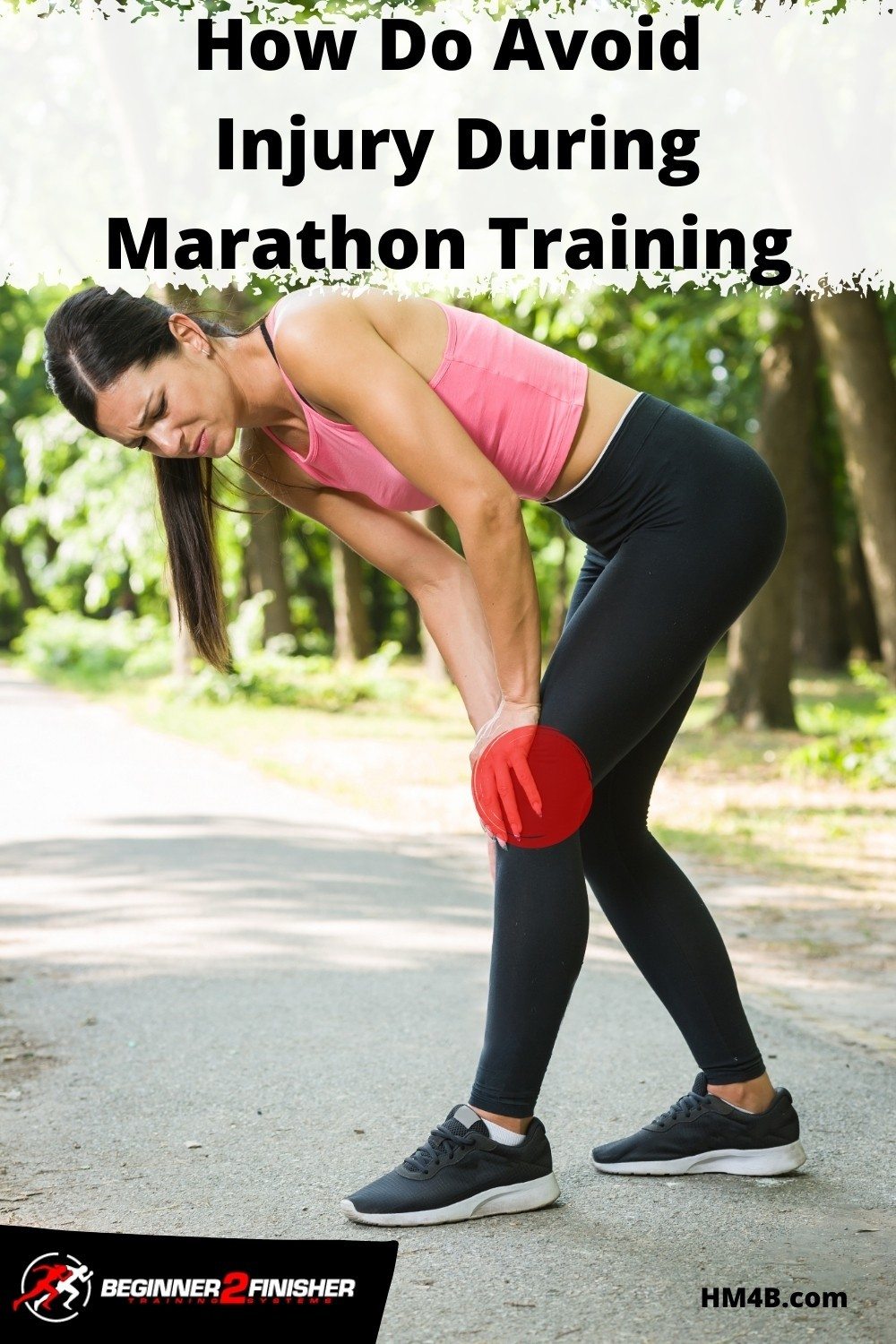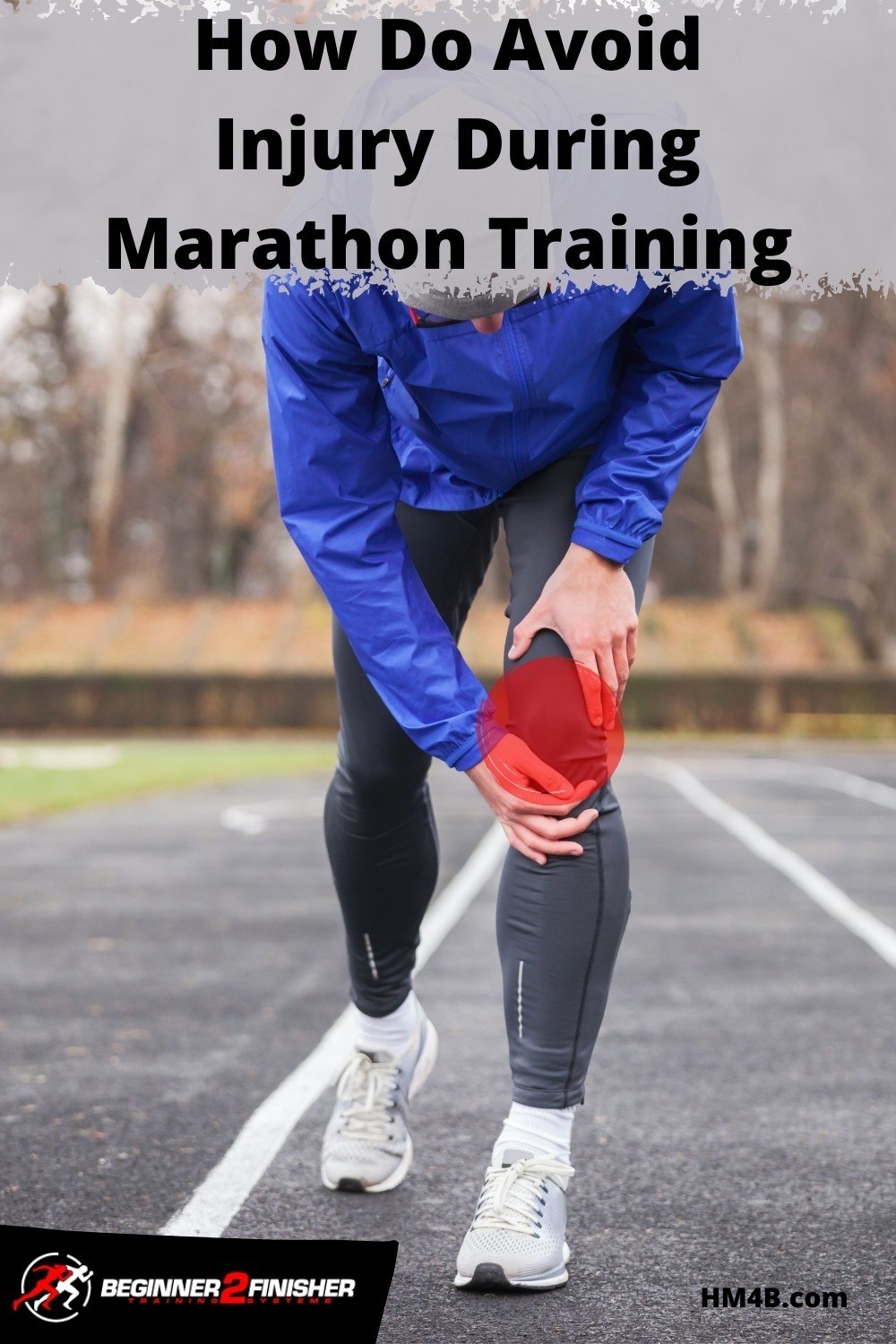When you start a marathon training program, your motivation levels will be high. Keeping yourself driven to run is not a problem, and that’s fantastic! But wait, you have to be careful. Pushing yourself too hard, too soon, and too often, is a recipe for disaster.
To avoid injuring yourself while marathon training, remember that it’s not about running faster and further each time. Wear the proper footwear, evaluate your running form, and be patient. Take your time training and only increase your intensity gradually. Always warm-up before and cool down after, and give yourself plenty of recovery time.
If you’re looking for tips on how to prevent injury during marathon training, you’ve come to the right place. Here, you’re going to learn everything you need to know to train safely and effectively so that you can perform at your best on race day.
How To Prevent Injuries While Training For A Marathon
Learning how to prevent injuries won’t just benefit you as you train for the marathon, but it’ll also help you on the day of the marathon itself. Don’t worry, preventing injuries doesn’t take that much effort, nor will it cost you any money. For the most part, it just requires more mindfulness on your part.
The good news is that everything you need to prevent injuries is well within your control. Start from the ground up by considering the footwear that you use.
Then, make sure that your running form or gait is the best that it can be. Remember: it takes a few hours to finish a full marathon, and your body will be repeating that gait countless times. So, it’s best to train it correctly, so you don’t hurt yourself while training or during the race.
Next, you’ll need to practice a lot of patience. Some people take longer to train for a marathon than others, and that’s alright! Give yourself as much time as your body needs, and only turn up the difficulty at a pace that you can sustain.
Rest and recovery are essential, but did you know that you can recover by crosstraining? That’s right! Doing something else other than running will improve your marathon performance.
Tips To Prevent Marathon Training Injuries
Aside from changing what you wear and how you train, here are some other helpful tips to prevent marathon training injuries:
Do your marathon homework
learn from the experiences (and mistakes) of other, more experienced runners. Injuries are common, and you can learn how they prevent or manage theirs.
Stay hydrated and fueled
Never underestimate dehydration or hunger when training for a marathon. These can make you lightheaded, leading to falls and injuries.
Listen to your body
This is where mindfulness comes into play. It’s good to push your body carefully, but you must also know when it’s telling you it needs a break. Listen to it!
Types Of Marathon Running Injuries You Can Get
Injuries associated with marathon training are never pleasant. Here are just a few of the common ones that you might experience at one point or another.
Joint Pains
Running is a high-impact sport because your legs are always landing on the ground to push your body forward. That can be bad news for your joints since repeated impacts over long periods can lead to joint pains.
Some people don’t feel joint pain immediately, but only later on in life. That’s why you should protect your joints whether or not you feel pain.
Fractures
Unfortunately, all those impacts can also lead to features in your bones, especially those in your lower body. That is quite common, and it highlights the need for proper footwear to keep your feet safe.
Muscle Pains
The thing about marathons is that you’re repeating your motions (i.e. running) for hours on end. That means your muscles, particularly those in your lower body, will repeatedly be contracting over long periods.
That can lead to muscle pains, especially if those muscles haven’t had time to repair fully.
Nipple Or Thigh Chafing
Try not to laugh, but what you’ve heard is true: not only do marathon runners suffer from thigh chafing, they also suffer from discomfort around their nipples for the same reason.
Whether it’s your nipples or your thighs, chafing happens because of prolonged exposure to friction. Your thighs rub against each other as you rub, and your nipples rub against your shirt.
That can lead to sore skin and even bleeding if you’re not careful.
How to prevent chafing during long run training sessions
Ensuring Proper Footwear
The first step to keeping your marathon training injury-free is to wear the right kind of shoes. There are several kinds of running shoes that you can choose from at your local sports store. Still, you’d be better off investing in those that are specifically for marathon running.
Marathon running shoes are better for you because they’re better suited for prolonged use. Unlike shoes for sprinting or jogging, marathon shoes need added protection and comfort so you can run for hours on end.
If you’re buying marathon running shoes from big brands, you can rest assured that they’ve been designed and tested for use in marathon running conditions.
Running with old or worn-out running shoes is a huge No-No, take a quick peek at my post – when should you retire your running shoes.
Having Your Running Form Evaluated
To reduce the risk of injury while also improving your performance, you need to do something called gait analysis. That means analyzing your unique running form to see if anything needs adjusting or correcting.
Since you can’t watch yourself run with your own two eyes, there are two methods you can use to evaluate your running form:
- Record a video of yourself running, so you can review it yourself or with your trainer.
- Undergo a professional gait analysis.
The professional option will cost you a lot more, but the feedback you get from it might be priceless in preventing injuries and improving overall performance.
Giving Yourself Enough Time To Train
A typical marathon training program will take anywhere from 12 to 20 weeks. You might even hear of some people undergoing shorter and more intensive training instead.
But always remember: marathons are mostly about competing with yourself and less about competing with other people.
So, give yourself enough time to train. Push your body according to its own pace, and not by comparing yourself with other people.
Everyone trains for a marathon at their own pace. If you need help with running, training, and overall time-management, check out this post:
How to find the time to train for a half or full marathon
The Right Pace Of Building Weekly Mileage
One of the key principles of marathon training is to build weekly mileage. As you can see, embedded in almost every marathon training program is the idea of giving yourself enough time and doing things gradually.
As you train week by week, don’t try to run too far if you’re not ready. Instead, add a little bit more distance each week. That’ll give your muscles, your lungs, and your heart time to become stronger and get you to the finish line.
The Correct Way To Warm Up And Cool Down
Just as with any form of physical training, you must always learn to warm up and cool down correctly. Simply putting on your running shoes and going at 110% will spell disaster, leading to cramps, twists, and all sorts of nasty injuries.
Warm-Up Tips
What’s the goal of a warm-up? It’s to get your blood and oxygen flowing to all of your muscles. Doing that will prepare your muscle for the test of endurance that it’ll experience as you train for a marathon.
To do that, all you need is a slow run or jog. You’ll notice that these are similar actions to running, only that it’s at a lower intensity.
Remember: the goal is to get the blood flowing, not to beat any records. So, don’t push yourself until you’ve warmed up for 10-15 minutes.
Cool Down Tips
When your training run is over, you’ll be tempted to collapse on the comfy grass and just go to sleep. That’s not a good idea! Instead, you should do the reverse of your warm-up.
During the run, your body is operating at full intensity. Once it’s over, lower the intensity somewhat, but do not stop moving. Instead, slow down to a jog for a few minutes, then even slower to a walk.
That will help to get blood and oxygen flowing at a comfortable pace without exerting your heart and lungs.
To top it all off, do some light stretching to prevent injuries. After running, your muscles will be much more pliable, so stretching them will lead to greater flexibility. In the long run, flexibility helps you prevent injuries while running long distances, like during a marathon.
Related: How To Properly Cool Down In 3 Easy Steps!

The Benefits Of Cross-training
Rest and recovery are important, but that’s no excuse to just lay in bed and sleep for days. Instead, try a form of active recovery like cross-training.
Cross-training is when you do a physical activity that’s completely different from your daily training (i.e. something other than running). Play some basketball, go cycling, or do whatever else you enjoy.
Firstly, you’ll prevent boredom and burnout by doing something else with your body instead of running.
Second, it will also give your muscles a chance to recover by using it in different ways, thereby preventing repetitive stress injuries from simply running all the time.
Related: The Most Common Excuses For Not Running And How To Avoid Them!
| Help support me and subscribe to my YouTube channel. YouTube video - 30 ways to make your runs less painful! Coach Scott's Credentials:
|
To sign up for a FREE half marathon training schedule, log sheet, and pace predictor CLICK HERE.

Recommended gear for runners
Connect with me:
| facebook.com/BeginnerToFinisher/ |





8 thoughts on “How Do I Not Injure Myself During Marathon Training?”